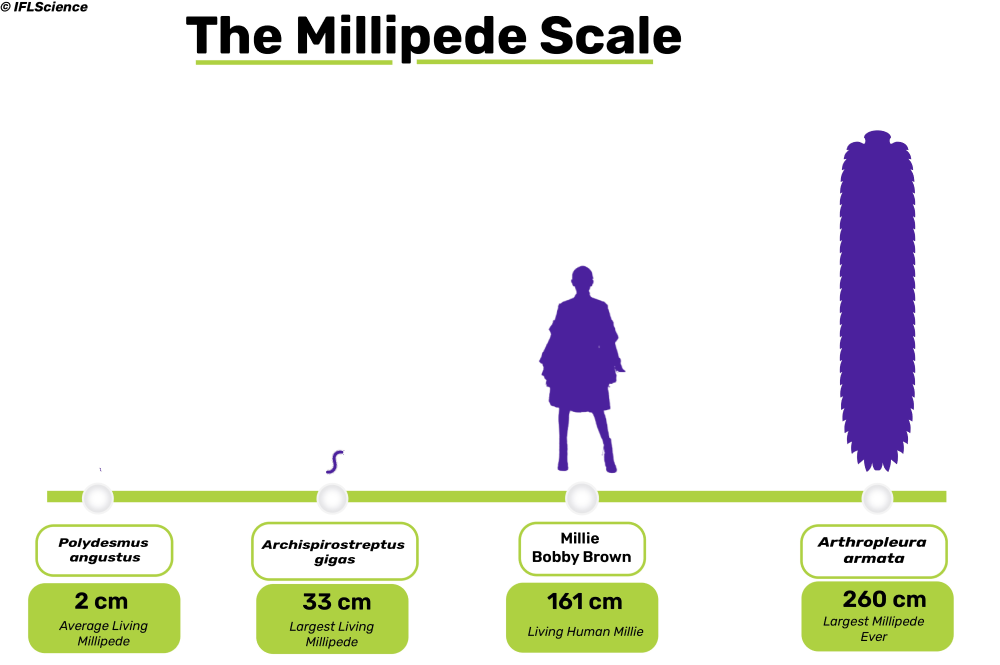Life On Our Planet has landed on Netflix, introducing some of the biggest and beastliest creatures from the history of life. Its narrator Morgan Freeman was amazed to learn that millipedes have existed for more than 300 million years, and of all the varieties they’ve churned out in that time, the most impressive has to be Arthropleura.
“Arthropleura was the largest millipede to have ever walked the land, a real titan of its day at over 2 meters [6.6 feet] long and half a meter [1.6 feet] wide,” said Netflix in a release. “The team worked closely with scientists to create from fossil evidence the most scientifically accurate model yet of this impressive giant arthropod.”
Impressive is putting it lightly as you watch two millipedes the length of small cars engaging in a forest. The prehistoric backdrop was captured in a surprising location as the global pandemic put a pause on travel during the series’ filming (like Prehistoric Planet, the series sometimes uses real locations with CGI animals).
“COVID restrictions meant the tree fern forests of New Zealand were off limits to the crew, so they instead filmed the backdrops in the largest tree fern forest in the Northern Hemisphere, on Ireland’s West Coast. The ferns were imported from Australia in the mid-19th century and have adapted well to their home at Kells Bay Botanic Gardens.”

Mad that you could fit one Millie Bobby Brown and two millipedes on one Arthropleura.
Arthropleura would’ve been one of the largest invertebrates ever to scuttle across the land when it lived over 300 million years ago. Known from a fossilized segment found in Northumberland, scientists were able to scale up its size revealing that it was around 2.6 meters (8.5 feet) in length, and around half a meter wide. As London’s Natural History Museum puts it, that’s “similar to that of a small car”.
Its fossilized remains have been retrieved from the UK, continental Europe, and North America, and we’ve been finding them for around 170 years. The biggest was found in Germany and earned Arthropleura the title of the largest land-living arthropod of all time.
Bugs had the capacity to get so big when Arthropleura was alive because of the high oxygen content on Earth at this time. Today, we enjoy an atmosphere of around 21 percent oxygen, but back then you were looking at 26 to 30 percent oxygen.
A lot of insects and invertebrates breathe through a network of tubes called trachea, fed by spiracles: openings in the thorax and abdomen that take in air. In a lower oxygen environment, this limits growth capabilities as getting too big can complicate getting enough air, so it’s thought that the higher oxygen content on Earth hundreds of millions of years ago gave land-living invertebrates a boost.
Arthropleura is just one of many giants you can spot on Life On Our Planet, now streaming on Netflix. It’s definitely one not to miss, and you won’t miss Arthropleura.
Source Link: The Biggest Millipede In History Was Over 2 Meters Long And Half A Meter Wide